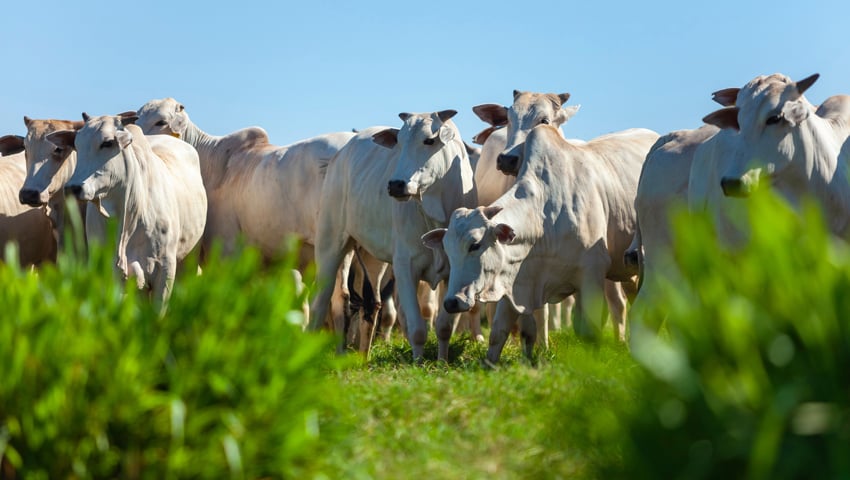The Climate Bonds Initiative has released a new report “Comparison Study of Chinese and Brazilian Agriculture Criteria: Harmonising Green Standards in the Agricultural Sector”, which delves into the green agriculture policies, sustainable agriculture investments, low-carbon agricultural activities between two agricultural powerhouses – China and Brazil.
Agriculture represents 25% of Brazil’s Gross Domestic Product (GDP) and 16% of China’s GDP. China is the largest consumer of agricultural products and simultaneously the world’s largest producer of grains and fruits. Meanwhile, Brazil ranks among the top producers, leading in the export value of such products, with China as its primary market.
The study aims to provide the groundwork for both nations to create a shared framework for green agriculture in the future, and foster consensus on investment and collaboration in green agriculture between China and Brazil. This report seeks to bolster connectivity across international taxonomies for green agriculture and direct more international capital into sustainable agricultural sectors.
The partnership between the two countries in the agricultural sector is strengthening due to the China-Brazil agricultural trade partnership, which will last for 30 years. The trade enables the use of local currencies in bilateral trade and financing activities, such as investing in low-carbon and clean technologies.
Sheila Alves, LAC Agriculture Programme Manager at the Climate Bonds Initiative said, “Brazil’s commitment to sustainable agriculture is evident in the many initiatives aimed at increasing the efficiency of the agri-productive sectors. By prioritising efficiency and innovation, Brazil is shaping a future where agricultural practices harmonise with nature. Together with China, we are forging a path towards a greener and more sustainable agricultural landscape.”
Shaoxin Li, China Agri Transition Lead at the Climate Bonds Initiative said, “China is at the forefront of climate finance and has leveraged it to support agriculture in addressing climate change and fostering biodiversity. Sharing a common goal of building a resilient and sustainable agricultural pathway, China and Brazil are poised to achieve significant milestones through joint efforts.”
The report, available for a deep dive in English, Portuguese and Chinese, reveals three key focal points that lay the foundation for a sustainable future in agriculture.
1. Transitioning to low-carbon agriculture: China emphasises the adoption of low-carbon agricultural technologies, such as reducing and enhancing the efficiency of fertiliser use, methane reduction, managing livestock manure, optimising the utilisation of straw and improving the energy efficiency of machinery. On the other hand, Brazil places a premium on land rehabilitation, intensive livestock management, the establishment of a crop-livestock-forest farming system and tropical cultivation techniques to combat climate change.
2. China and Brazil are harmonising green agriculture criteria: Recognising common challenges of land degradation, pollution, and climate change, China and Brazil share policy priorities. Both nations are committed to enhancing the efficiency of resource use, agricultural productivity, climate change adaptation, and modernising agriculture.
Establishing green agriculture criteria for Brazil would facilitate the interoperability between the two countries. Both focus on decarbonising soil use, harnessing the potential for forest carbon sinks, agricultural carbon sequestration, traceability within the value chain and biodiversity conservation. Also, climate-adaptive and climate-friendly infrastructure development must be incorporated into the criteria as a critical foundation for efficient and high-quality agricultural production.
3. Seven actionable recommendations: Offering a roadmap for the collaborative pursuit of a green transition and sustainable development, the report concludes with seven actionable recommendations:
- Establishing Green Agriculture Criteria: Climate Bonds urges the central banks of China and Brazil to collaboratively create a clear framework for green agriculture practices, investment, and financing activities.
- Prioritising Key Areas of Development: The report recommends identifying areas of symbiosis in the agricultural sector and intensifying focus on innovation and research & development (R&D) in relevant agricultural science and technology.
- Bilateral Trade Agreements: A call for establishing agreements to support investment and financing for sustainable agriculture, outlining shared objectives and principles.
- Directing Capital Flows: Proposals for incentives such as a China-Brazil special fund for green agriculture and prioritizing green lending by financial institutions.
- Reducing Transaction Costs: Innovative approaches, including public-sector funds and green financial products, to create a conducive financial environment for investments in green agriculture.
- Partnership Platforms with Financial Institutions: Encouraging collaboration in matching projects, identifying climate-related risks, and exploring investment opportunities in low-carbon agriculture.
- Enhancing Dialogue: A plea for long-term and stable communication channels between China and Brazil, fostering offline interaction opportunities and exchange programs to share best practices and knowledge.
